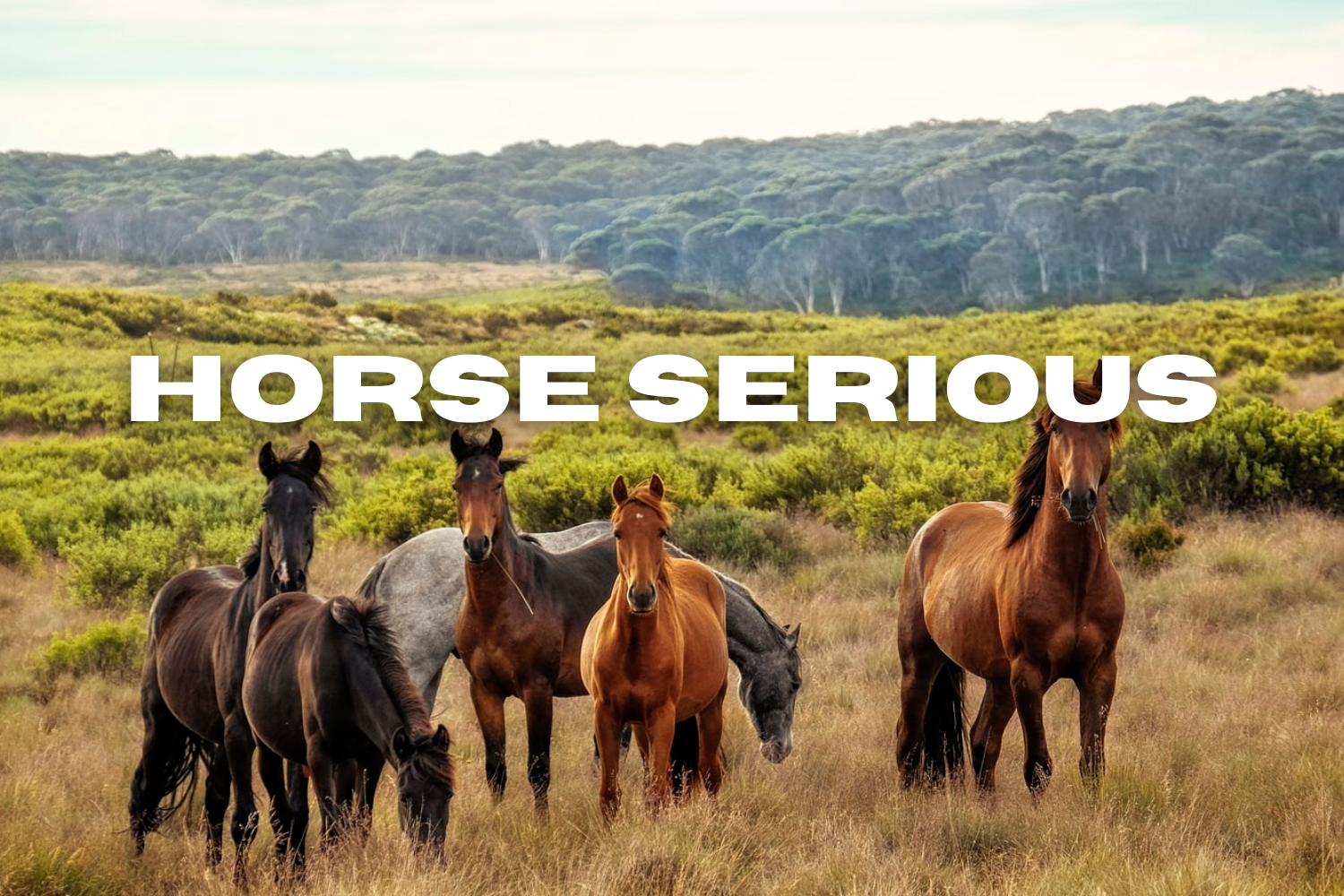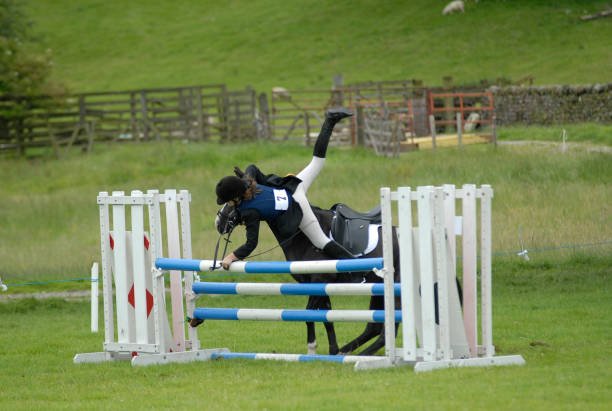Airbag vests are becoming more and more common in the equestrian industry. Their use not only provides riders with more security but they can boost confidence and give our loved ones peace of mind knowing we are protected. Are you wondering if they are worth the investment and need to decide if its right for you? Here is everything you need to know about airbag vests for equestrians.
What Are Air Vests For Equestrians?
Airbag vests are an innovative technology used for personal protection. They are being used in almost every dangerous sport from motorcycling, bicycling, paragliding, you name it. If there is a sport with a single pilot that could be ejected, they are or should be wearing an airbag. Airbag vests for equestrians use this technology to protect riders in the event of a fall. Almost every rider has fallen off, been thrown off or has had to jump off a horse at some point in their career.
An air vest for equestrians, consists of a carabiner attached to a firing mechanism that is located inside the vest. These vests are often light weight and comfortable so that they don’t interfere with the riders natural movements. Additionally, many brands, like Helite offer airbags that can be zipped into compatible outer layers. These outer layers could be show jackets for competition or comfy lounge wear for training. Many of these equestrian airbag brands try to create as many options as possible so riders don’t have to sacrifice style for safety.
https://pagead2.googlesyndication.com/pagead/js/adsbygoogle.js?client=ca-pub-3762802995754264
(adsbygoogle = window.adsbygoogle || []).push({});
Airbag Vests and Proper Protection
When we talk about airbags, we think of protection. However, not everyone or all safety equipment protects in the same way. Some air vests only protect the back, while others protect the chest, the neck or the ribs. When choosing an airbag, it is important to do your research. Is the airbag vest that you are interested in going to protect you from neck to tailbone?
Vital Areas
Protecting vital areas is important, and when choosing an airbag vest for an equestrian you’ll want something that protects as much as possible. Arms and legs are difficult to protect with an airbag for obvious reasons. If you wore airbag pants you probably would have a difficult time moving. It wouldn’t be surprising if an airbag company came out with breachers with airbags installed into them in the future.
Inflation, Deployment & Trigger Speeds
Additionally, when looking for the right airbag vest, consider the deployment time. Most manufacturers’ sales representatives will talk a lot about the trigger delay. This is what happens after the detection of a fall, it basically means what should trigger the inflation of the airbag. The best, most protective airbags should deploy in 100ms (milliseconds) maximum. Anything over that, might not protect you efficiently. Most sale reps are less informative about deployment time, but what really matters for your safety is that the vest is fully inflated and protects you before you hit the ground.
Technically, the industry standard for deployment time must be less than 200ms. However, there are airbags on the market that deploy in 100ms or less. It is considered that, to provide effective protection from the initial impact, the airbag must be fully deployed between 80 and 100ms.
Inflation Volume
If we talk about trigger speed, we have to talk about inflation volume. Inflation volume is the size of the airbag and how much air goes into it. This is important when deciding what equestrian airbag is right for you. Size matters! Always make sure you read the size chart. Airbag vests come in a variety of different sizes and this doesn’t just include the size of the vest itself but also the size of airbag. Depending on your weight, height and overall size, you will need a certain inflation volume to fully protect you.
It is also important to consider the size with the speed of inflation. Inflating a smaller, lower volume airbag will always be faster than inflating a larger volume. The amount of air in the airbag cushion is an additional indicator, with the pressure ranging from single to triple. The inflatable volume defines both the area covered and the thickness of the airbag. A good range is between 18 and 25 liters. The final pressure determines the protective abilities of an airbag.
Designing an airbag is a compromise between triggering speed and volume of protection. Helite offers this best compromise on the market with total protection guaranteed from 100ms for a deployed volume of 23 litres. It is also important to note the pressure inside the airbag and not just the visual appearance of the final inflation. This same pressure must also be the same everywhere, in order to avoid pressure in only one place. For example, the cushion inflates in a singular area and is too compressed at the place of impact. Make sure the airbag you are interested in offers uniform inflation and pressure at all points. Some airbags like ones on Alibaba, react more like a simple “balloon” or life preserver for water.
Equestrian Airbag Size Matters
As stated above, size matters when it comes to an airbag vest for equestrians. It isn’t just the size of the vest that needs to be considered its the size of the airbag itself. Most brands use sizing that combines both the vest size and airbag size. Always follow the size charts when choosing an airbag vest. If you choose a wrong size, a contraindication can occur. This can also happen when you wear clothing that covers the airbag jacket. This means that it will not work properly because something interfered.
How You Fall & What You Wear
Wearing the right size is important, but it is also vital to note that how you fall can interfere with the airbags function. You must avoid falling on hard or pointed objects that are placed between the vest and your body. For example, lets say you have keys in your sweater pocket that you are wearing underneath your airbag. This could puncture the airbag at any time and affect its deployment. Additionally, in the event of a fall, landing on a set of keys could lead to serious injury.
Children Vs Adults
Some airbags only work if the person wearing it meets a weight requirement. For example, Helite airbags require all users to be at least 77lbs for the airbag to work properly. Additionally, when you are ejected from a horse, it must be at a certain weight to trigger the airbags deployment. With a wired vest, the trigger pull being 20 to 35 kg, some small builds (children, teenagers) may not offer sufficient resistance to trigger the firing pin.
Situation & Equipment
There are certain situations where one cannot wear an airbag. For example, pregnant people should not wear an airbag. However, pregnant people should also avoid riding horses.
The airbag may not fit over your equipment. Many airbag vests and jackets come with adjustable straps in order to fit over your equipment. Wearing a body protector and an airbag vest increases your safety. However, it is important that when you combine both you can still maintain proper mobility. The airbag and body protector should not hinder your movement in any way.
In addition to combining an equestrian air vest with other equipment, make sure the vest you are interested in is compatible with your equipment. Most brands will say what their airbag can be worn with. If they do not mention that, it is best to avoid them entirely. For example, Helite Air Jackets say specifically that they can be worn over top of a body protector or garments like a coat. Helite also makes compatible layers to wear with the airbags. This gives you more room to showcase your style while maintaining safety.
https://pagead2.googlesyndication.com/pagead/js/adsbygoogle.js?client=ca-pub-3762802995754264
(adsbygoogle = window.adsbygoogle || []).push({});
The Rules: Standards & Regulations
What are the regulatory obligations regarding body airbags? An airbag is PPE (Personal Protective Equipment). As such, it must meet the requirements of European Directive 89/686 on PPE which allows obtaining the CE label according to expert opinion.
The tests and results are issued by a notified body; in Helite’s case, it is the Critt. This marking certifies the compliance of the vest with European directive n° 89/686/EEC, which certifies that the equipment is indeed personal protective equipment (PPE). It indicates that the vest is sold after having passed a series of certification tests and that the manufacturer undertakes to check that its products remain compliant with this level of quality.
The European regulation
Directive 89/686/EEC which governs the CE label has been replaced since April 2018 by a European regulation “relating to personal protective equipment”. To claim to be CE approved, the various manufacturers have recourse to an approval “according to expert opinion”: they call on laboratories (more or less independent) in order to obtain CE marking (marking of conformity) Also, note that the CE label does not at all mean that the product was manufactured in the European Union. CE means that they are in compliance of a product with an approval issued by an EU country.
The European standard relating to inflatable protectors is not harmonised on a European scale, which means that it has no primacy. There is no standard in force in the horse riding sector, only the European directive requires CE certification according to experts. As things stand, the French standard for the technical approval of horse riding airbag systems, called NF S 72 800 2021 does not yet officially exist.
This test protocol is strictly Franco-French. This standard gives a maximum deployment time to be respected of around 200 milliseconds. Far too long when we know today that it must imperatively be less than 100ms. At this time, nothing clearly defines the technical constraints to be respected for an airbag vest. This standard will be validated in august 2022. This does not mean that the airbags available on the market are not “compliant” with certain rules.
Final thoughts
When buying an equestrian air vest it is important to check for these main things:
-
Inflation speeds
-
Inflation Volume
-
Size
-
If it can be worn with other equipment
-
Certification
Don’t cheap out on an airbag vest. It is important to remember that this is meant to protect you from serious injury. A good air vest will last a long time and most companies offer warranty as well as maintenance. Do your research and trust reliable brands.
https://pagead2.googlesyndication.com/pagead/js/adsbygoogle.js?client=ca-pub-3762802995754264
(adsbygoogle = window.adsbygoogle || []).push({});





